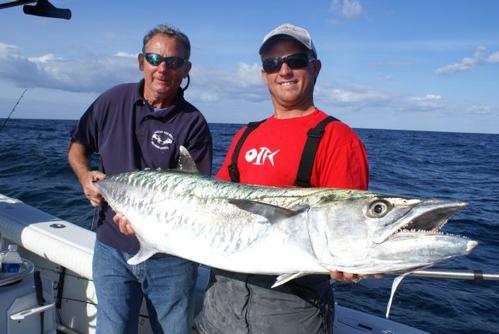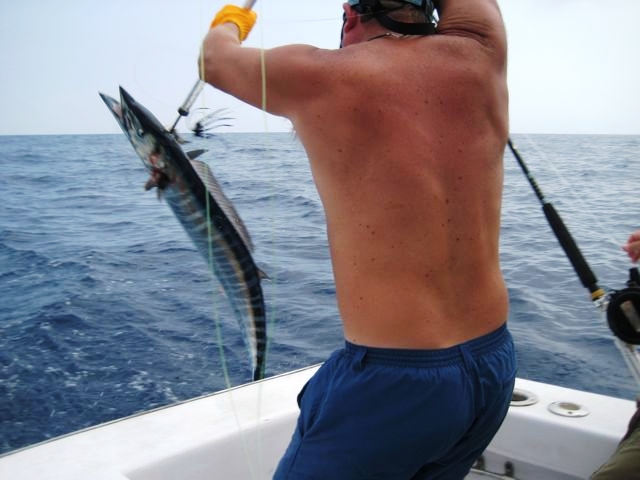- You are here:
- Home »
- Blog »
- Blog
- » The Best Tips For Gaffing A Big Fish
The Best Tips For Gaffing A Big Fish
Fishing is an entertaining sport as well as hobby for many people. Fishing is not just a perfect past time, but could also help you strengthen the bond between your peers and family members.
Depending on the place where you fish, your technique should be different. And to help you with gaffing a big fish, we have here compiled a few tested and tried methods. Read them all!

Tips To Be Remembered While Fishing
- Always check that the gaff hook is facing downwards and towards the boat as the fish is brought alongside.
- Avoid gaffing a fish to the tail; bury the gaff in the forward shoulder of the fish.
- To protect the meat, always aim the top of the fish, towards the head.
- After catching a fish, if fish is on the gaff, instruct the angler to back off and drag.
- Patience is most important while fishing. Having a radio or book nearby for entertaining keeps you motivated and in high spirits.
- Make no compromise with gaff; always use high quality equipment while fishing.
- The hook should be made of forged steel and the handle should be weather resistant. Aluminum or composite material with foam or rubber grips is highly prfered.
- Carry different types and sizes of gaffs with you when fishing.
- Always sweep the gaff in toward the boat, when gaffing any fish.
- Always use a head shot, because it won’t spoil the steaks or fillets.

- After gaffing a fish, pull the hook into the fish’s head, sinking the steel into some solid and bring it to the side of the boat.
- Try to keep at least two gaffs for game fish that come in all sizes and shapes. Standard gaff pole length is 8 feet as per International Game Fish Association.
- A flying gaff is must for safety while targeting mako, a heavy weight tuna and sword fish.
- Cover up all sharp hook points with a safety spring, cork, tennis ball or PVC tubing. These gaff heads are sharp and might prove to be dangerous for the fish as well as crew.
- Never use one hand to lift the fish and another to gaff it.
- The big fishes will be found where there are more weeds in river or lake.
- Take guidelines from local people about what bait they are using and what is the best weather condition for fishing.

- Try using polarized glasses; this will give you a clear vision to see through the water.
- Discuss with the experts who have plenty of ideas about gaffing a big fish and get their advice.
- Male and female bass fish move to the shallow area of the river for feeding and nesting when the temperature is between 55 to 65 degrees. You can locate bass at shore itself at this time.
- Lake trout are generally found in cold water. You need to go deeper during warmer seasons for fishing lake trout.
- Generally, lake trout are found in groups. If you happen to catch a lake trout, you will have a chance of getting more in nearby areas.
- Your hooks should be razor sharp when fishing for salmon. A safety tip when fishing for Muskie is to use hooks that are barbless. Secured and controlled method for catching a large fish is to use flying gaff.
- Make sure you have the right gaff based on fish and boat you are selecting. No young kids must be near you while gaffing. As gaff is sharp, make sure it is free of any rust.

- If you are not an angler, using a bridge gaff will be easier. If you are fighting with a fish, have someone else to handle the gaff. While using a bridge gaff, you need not to worry about rust and heavy winds. Cliff gaff are used to gaff fishes from a high point.
- Never attempt to gaff a fish which is too deep to reach.
- Never gaff a fish towards the tail. Point the hook in the forward shoulder of the fish.
- Make sure that while lifting a fish up and in the boat, and into the cooler or fish box, you do it in one smooth motion.
- Clear any unwanted obstructions for great level of fishing.
- A key to success in gaffing is a proper communication between the crew members.
- Try to use 12 foot long gaff while catching large fishes.
- A three inch throat, and quarter inch diameter hook will work fine while catching snake kings, schoolie dolphin and football tuna which weigh less than 20 pounds.
- For a large cobia, medium tuna and gaffer dolphin, a four to five inch gap hook will be useful.
- Select the gaff hook with throat that should be placed across the back of the fish. This is where gaff is strongest when catching large fish.
